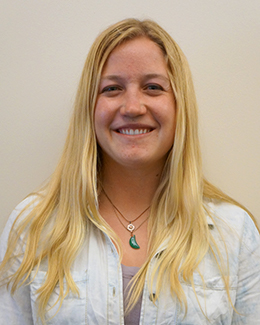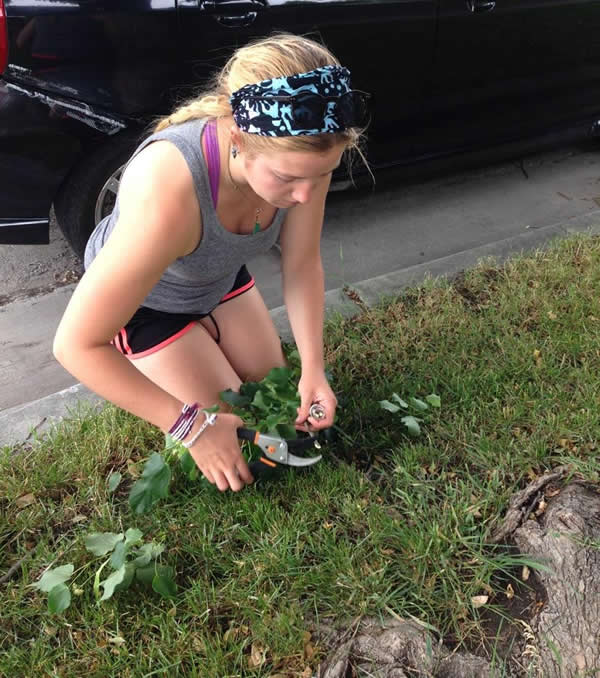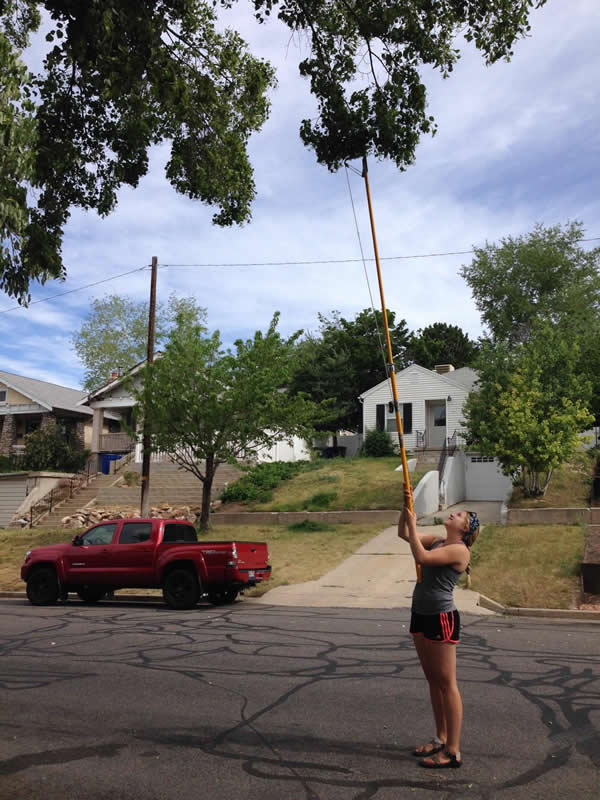iUTAH Team - Undergraduate iFellows

Lily Wetterlin
University of Utah
Mentors:
Faculty: Diane Pataki, UU
Graduate: La’Shaye Cobley, UU
Graduate:
Carolina Gomez Navarro, UU
Research Focus:
Research Focus Area 1
Major:
Geology & Environmental Studies
Biography:
Lily Wetterlin plans to graduate from the University of Utah in the spring of 2017 with two bachelors of Science: Environmental & Sustainability Studies and Geoscience with an emphasis in Geology. She has been actively involved in both her majors. She currently works as an undergraduate research assistant for the Geology & Geophysics department and is on the Sustainability Leadership Committee in the ENVST department. After graduation she plans to take a year to travel and then upon return attend graduate school. She is passionate about science and its contributions towards a sustainable future. She is excited for the new research skills and connections she will gain this summer while on the iUTAH team. While not studying or working Lily spends her time practicing yoga, reading and playing in the mountains and deserts of Utah.
Weekly Recap:
Week 1 | Week 2 | Week 3 | Week 4 | Week 5 | Week 6 | Week 7 | Week 8 | Week 9 | Week 10 | Week 11
Week 1: May 16-20, 2016
The first week was an amazing introduction to what iUTAH works towards and what our research will look like for the rest of the summer. I was introduced to the Urban Ecology lab that I will be working in for the duration of the iFellows program. My graduate mentor, Carolina, gave me an introduction to her research on urban trees and the question of what water sources trees are utilizing in the Salt Lake valley. This can be found by analyzing the oxygen and hydrogen isotopes in tree roots and leafs.
Stable isotopes are a precise way to analyze what water sources the trees are using. Each water source has a distinct ratio of heavy to light isotopes. Typically water sources that are exposed to higher rates of evaporation will have a higher percentage of heavy isotopes to that of a water source that is exposed to lower or no amounts of evaporation, such as groundwater. This is because lighter isotopes are easier to break down, therefore will be the first to evaporate, thus increasing the percentage of heavy isotopes in that water source. Therefore, by knowing the isotope ratios in the groundwater, irrigation and rainwater of a particular area we can determine what water source(s) the trees are tapping into.
Thus far in Carolina's research she has determined that, typically, trees tap into more than one water source and that these sources vary based on tree species, depths of roots and the time of year. The question that has arose in this research stemmed from the findings that certain trees have isotope ratios that are incompatible with either groundwater or irrigation in the area. This suggests that there is an unknown water source that we have not considered.
This research is important to the sustainability of trees in the Salt Lake valley and will help us understand what water sources the trees are utilizing and what sources have little influence. I'm excited to get out into the field and to start forming my own research questions and analyzing my findings.
Week 2: May 23-27, 2016
This week was all about composing my research proposal. I worked closely with my two graduate mentors, La’Shaye and Carolina, to choose my research question, hypotheses, introduction and work plan. In the process of forming my proposal I had an introduction to GIS and the program ArcMap. With ArcMap I was able to upload a file of trees in the Salt Lake Valley with the following data: species, trunk diameter, condition, plot residence and location. With this data I was able to narrow down the trees that I will be sampling for my research. I will be sampling the three most common species to the Salt Lake Valley: Norway Maple, Linden, and Green Ash. My question is to determine whether the size of an urban plot affects the nitrogen availability and water source for trees.
During the weekly Urban Ecology lab meeting I was able to present my proposal to the lab group and my mentor, Diane Pataki. It went very well and I received very helpful feedback on what was well planned and what could be improved. I am excited for the progression of the project in the following weeks.
Week 3: May 30-June 3, 2016
This week was my first week in the field. We spent Tuesday collecting leaf and soil samples from selected trees downtown to determine their Nitrogen availability and whether the source is from fertilizer or from NOx gas released by vehicles. The remainder of the week I was in lab preparing the leaf samples to run by grinding and storing them.

Collecting Leaf Samples Downtown
Week 4: June 6-10, 2016
This week was a busy week filled with lots of fieldwork! I have finally collected all of the samples I will need for my project. I have collected stem and leaf samples from 60 trees across the Salt Lake Valley to test for water sourcing and nitrogen availability in relation to plot size. I am excited to start prepping my samples to run in the following weeks.


Week 5: June 13-17, 2016
This week was a bit slower in the lab, isocamp has started up so much of our equipment has been taken due to that. I spent the week working on my paper and reading more papers in relation to my project. Our cohort session on Monday was very useful in practicing in presenting our research for the upcoming iFellow Symposium, we also got to work with some new equipment out in the field!
Week 6: June 20-24, 2016
This week I continued to work on preparing my samples for the water extraction line and mass balance. I have been also working on my abstract, introduction and methods portion of my paper. With this I have been researching papers published with similar questions in relation to mine.

Grinding leaf samples in preparation for mass balancing and the mass spec
Week 7: June 27-July 1, 2016
This week has been very busy. I am in the process of extracting the water out of my stem samples. To do this we use a cryogenic extraction line and then test the water on the Mass Spec for the hydrogen and oxygen isotopic signatures. I have also been prepping my leaf sample for the Mass Spec by weighing them out on the Mass Balance, it is a very tedious process. I have become very familiar with both of these lab techniques and am excited to continue to work towards getting my data.
Week 8: July 4-8, 2016
This week consisted of finishing up with water extractions and weighing out my leaf samples on the mass balance. My samples are finally being ran and I will have data back within the next week, yay! This week we also did a mock poster presentation at our cohort session. It was very helpful to see layouts of other posters and get feedback on how to improve mine. Excited for the upcoming symposium!
Week 9: July 11-15, 2016
This week has been very exciting. I finally have my Oxygen isotopic data back from my stem samples. I have started coding the data using the program R. I have some preliminary graphs ready to start interpreting for the following week. Can’t wait to get some results!

iUTAH Summer Symposium Poster Session
Week 10: July 18-22, 2016
This week I finally received my Nitrogen data. I have coded it into graphs using the program R and will be spending this weekend and the remainder of the program interpreting my results and finishing up my paper. I look forward to the finished product and am excited to present my findings at the upcoming symposium this coming week.
All content provided on this iUTAH Team - Undergraduate iFellows weekly recap is unedited, updated by each participant to provide a review of their progress, and is for informational purposes only.


